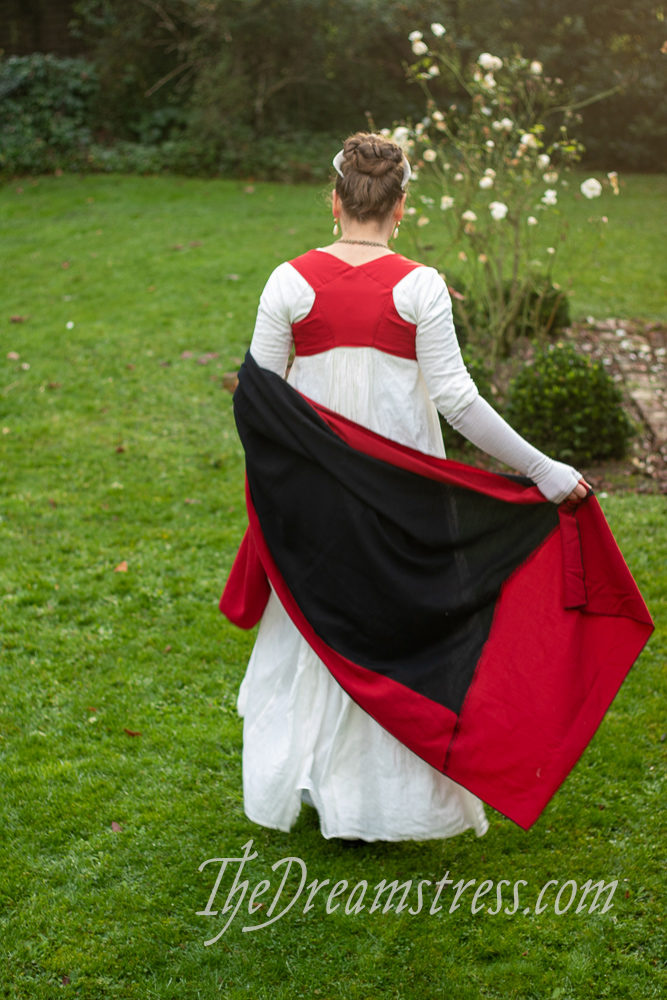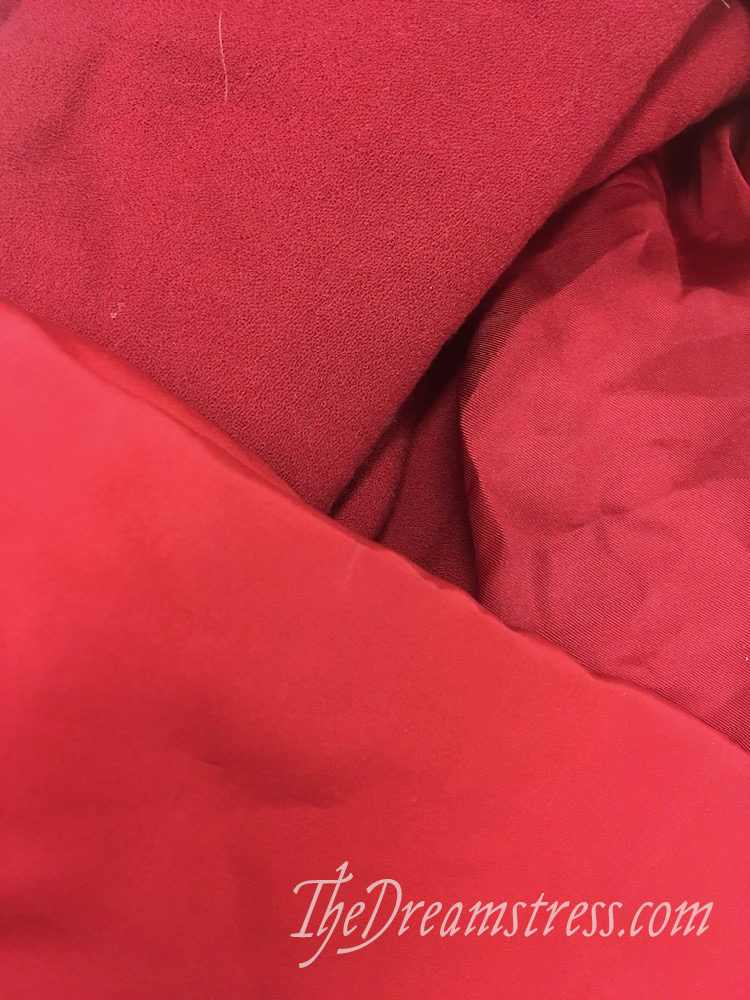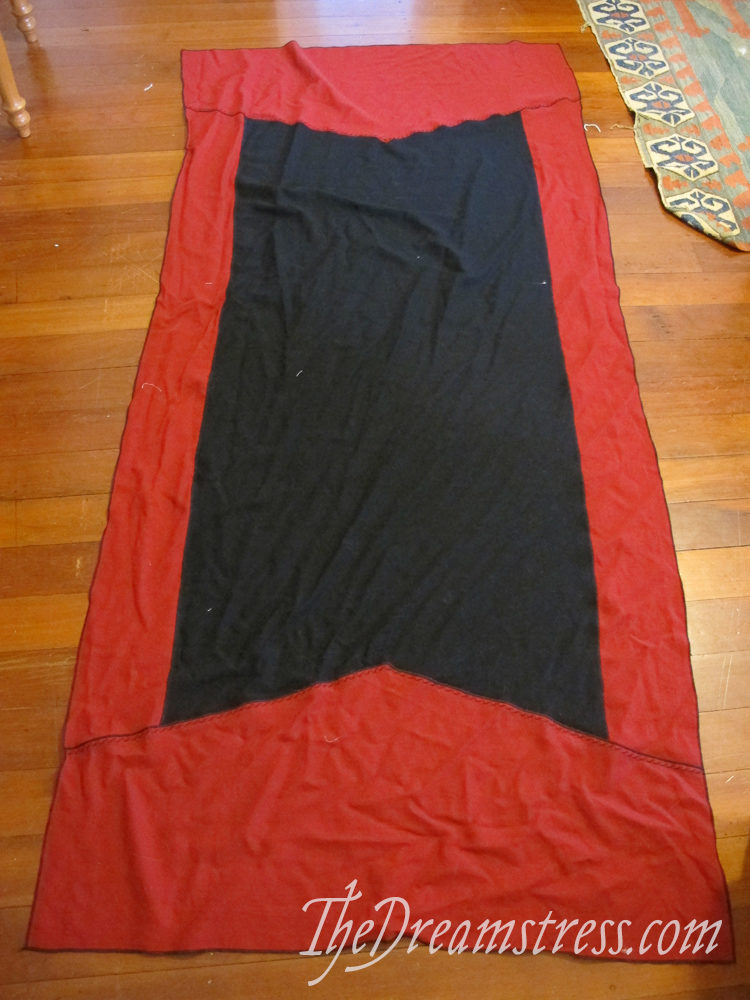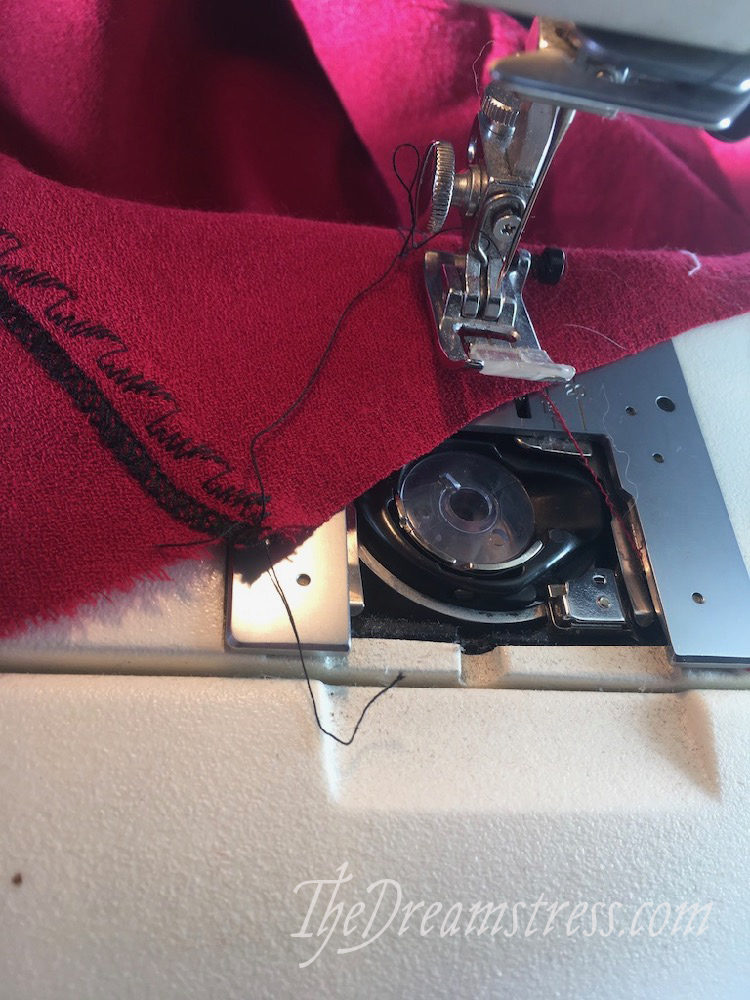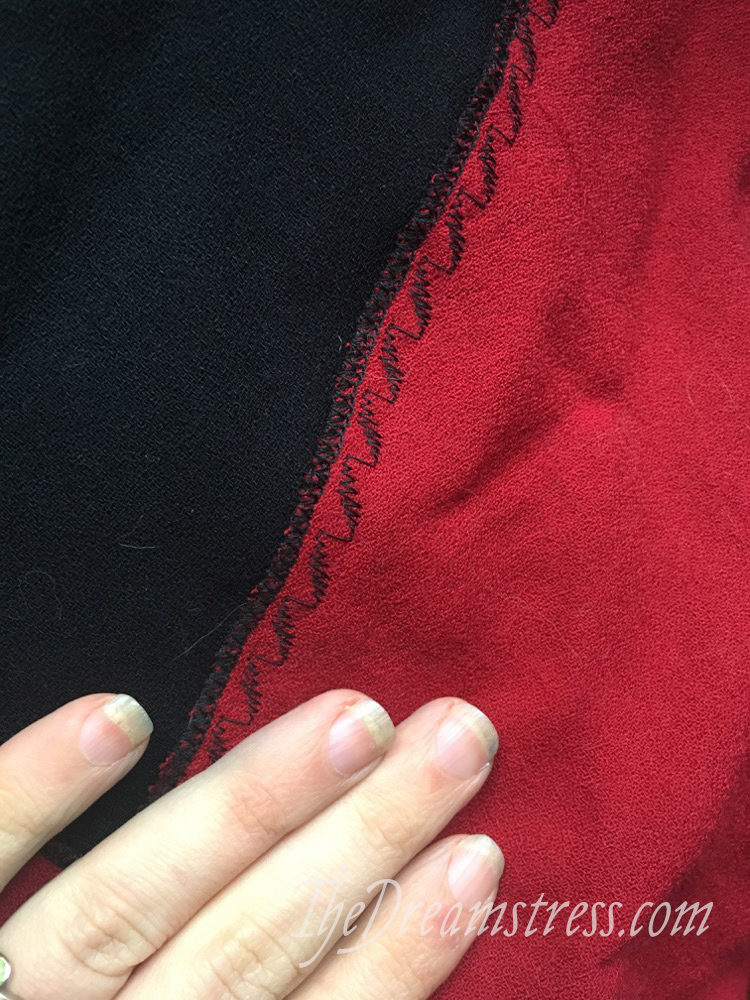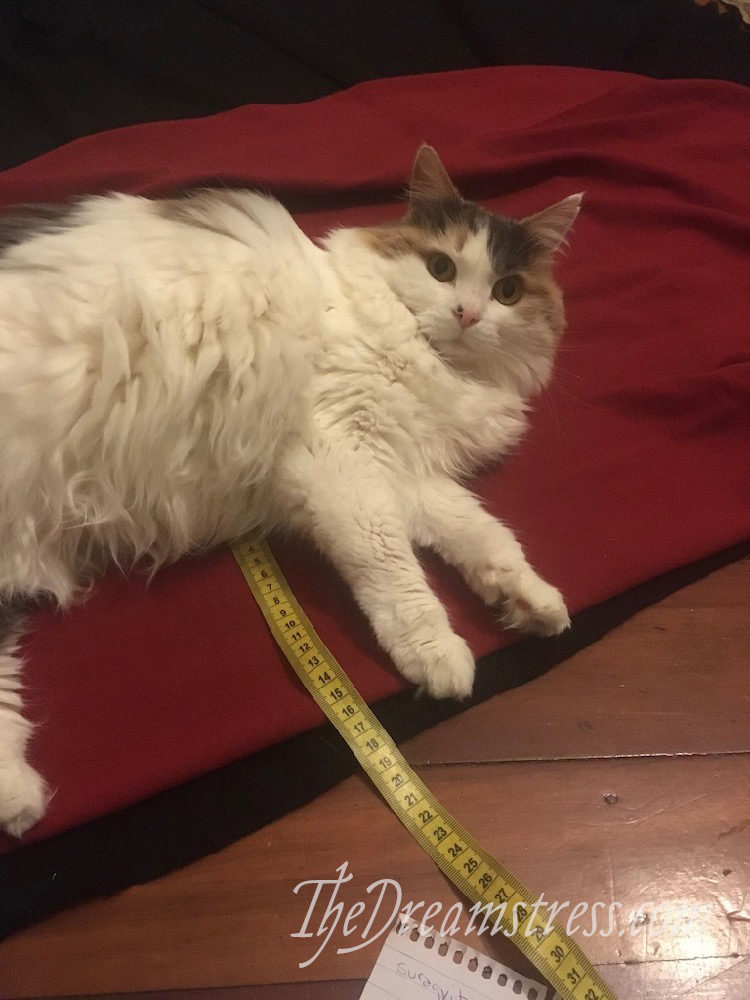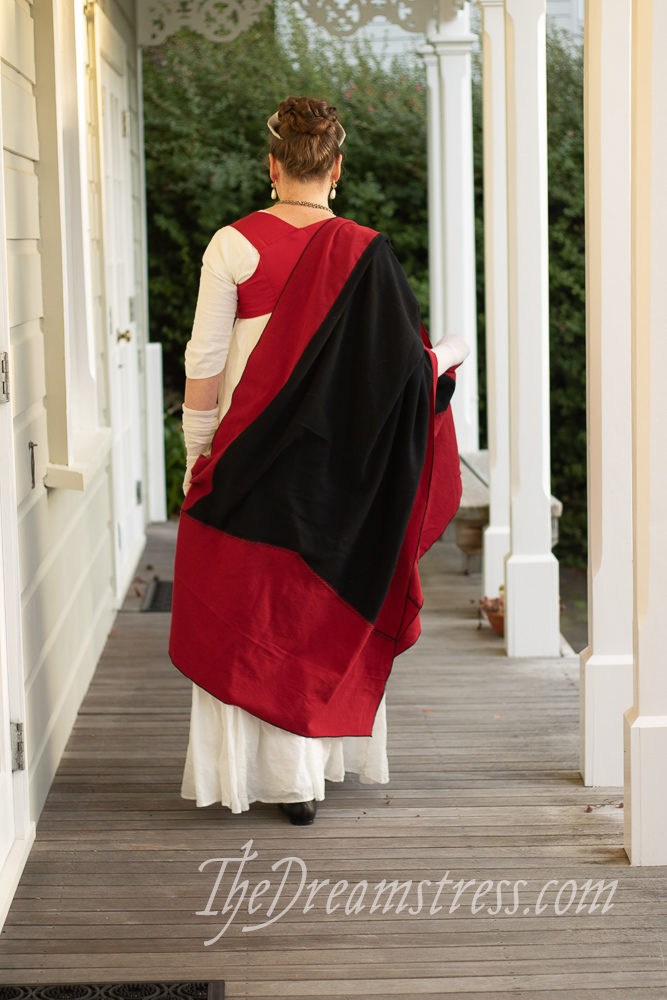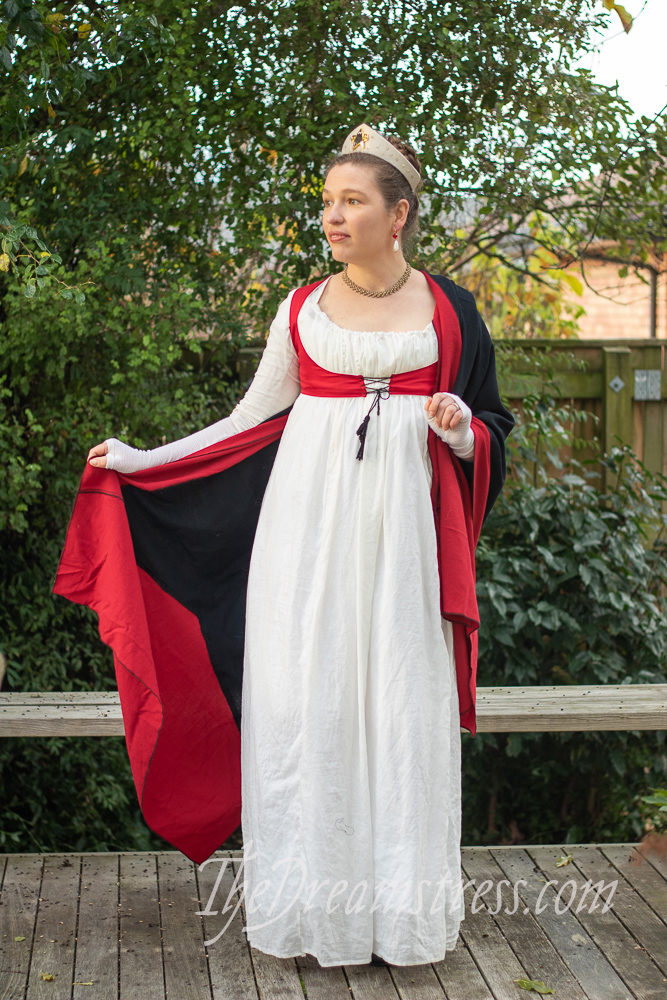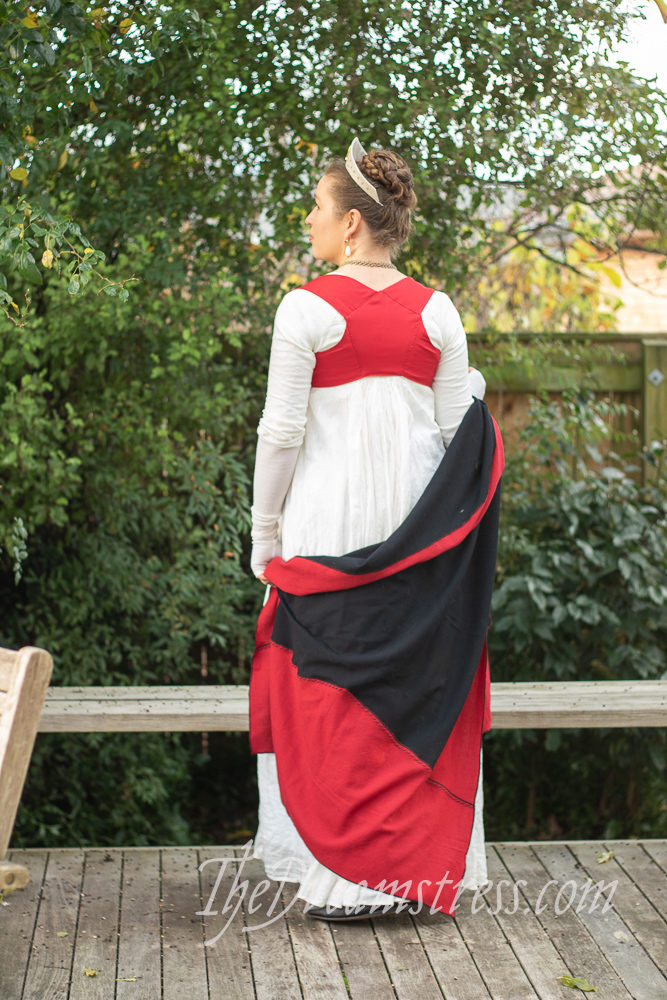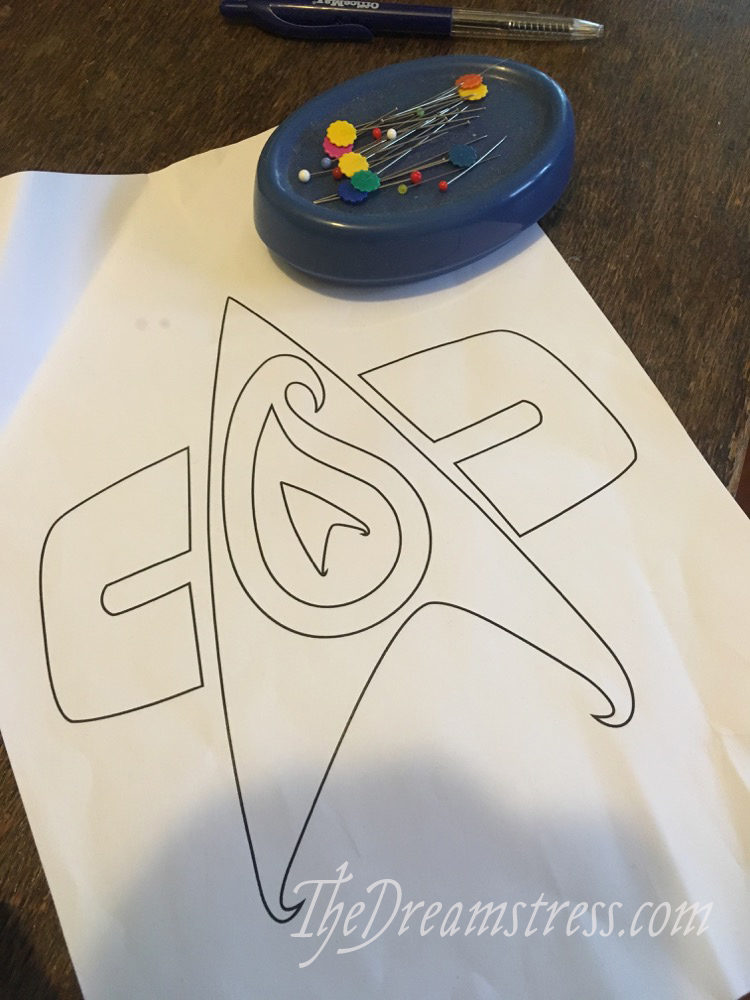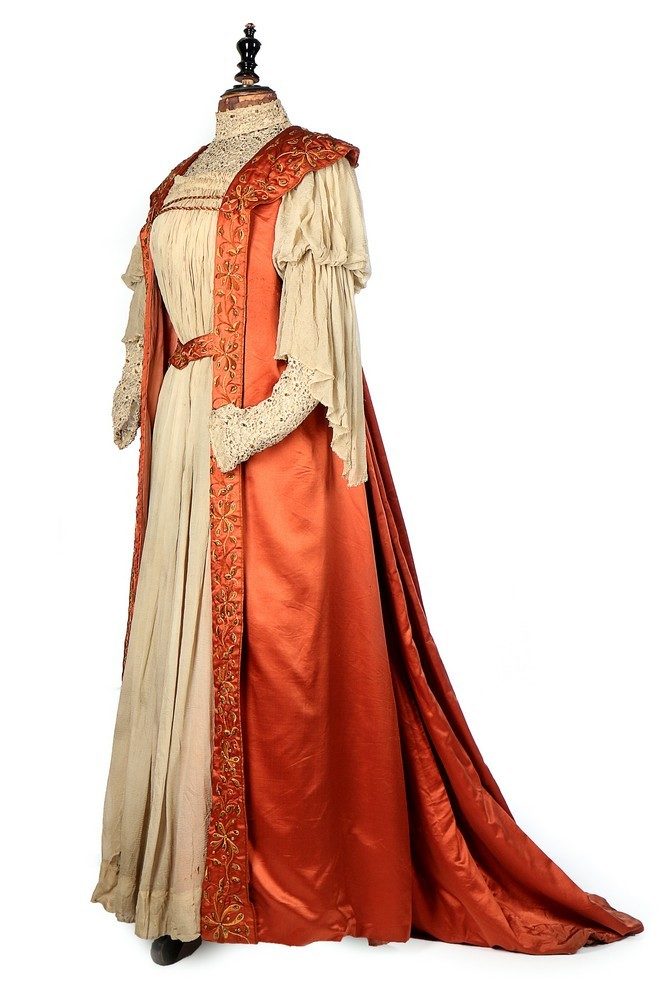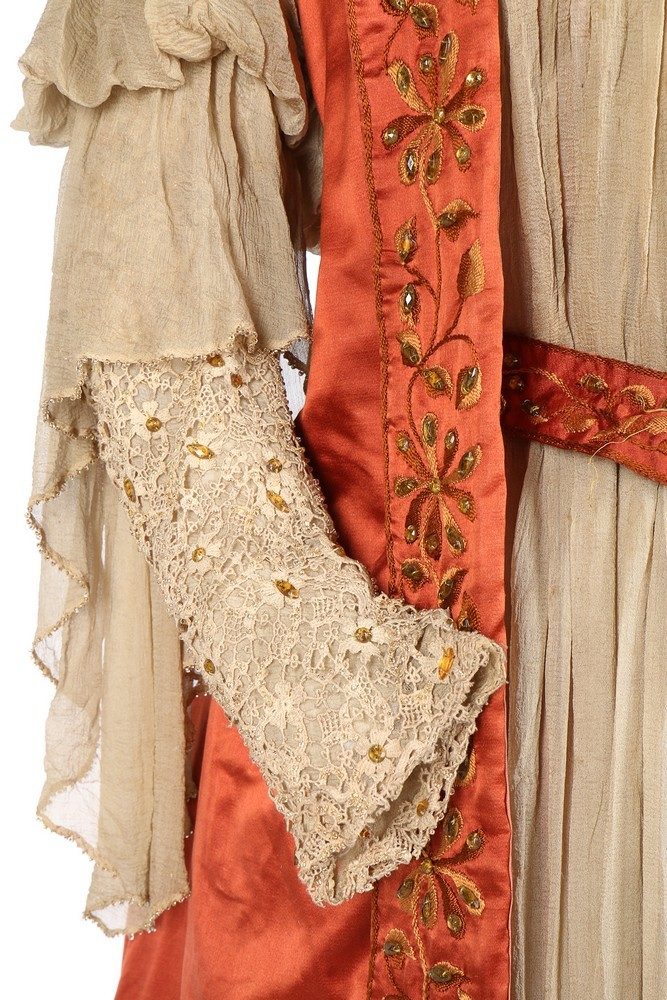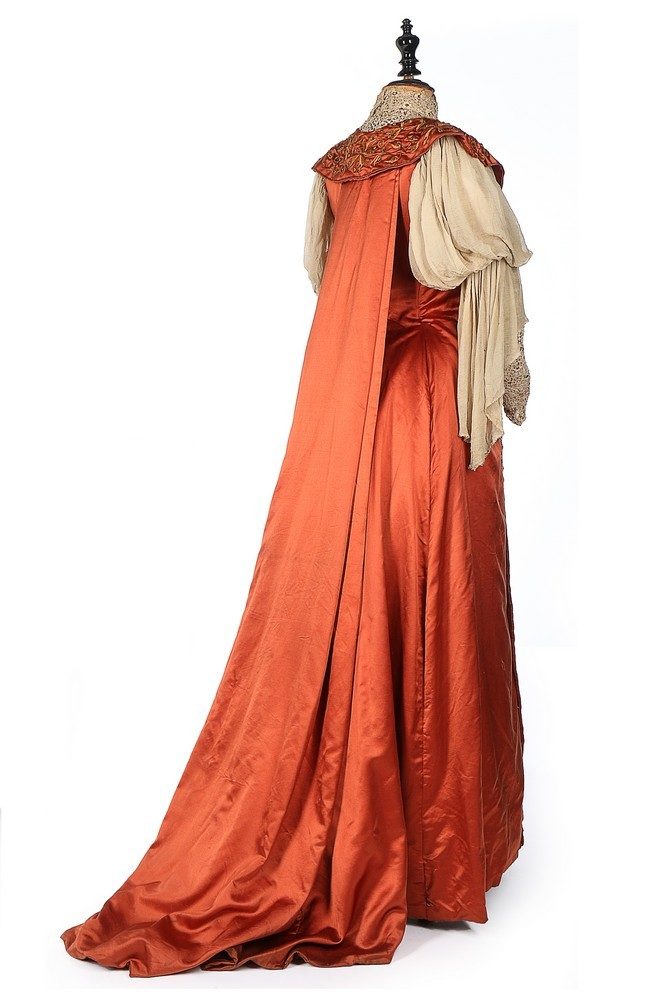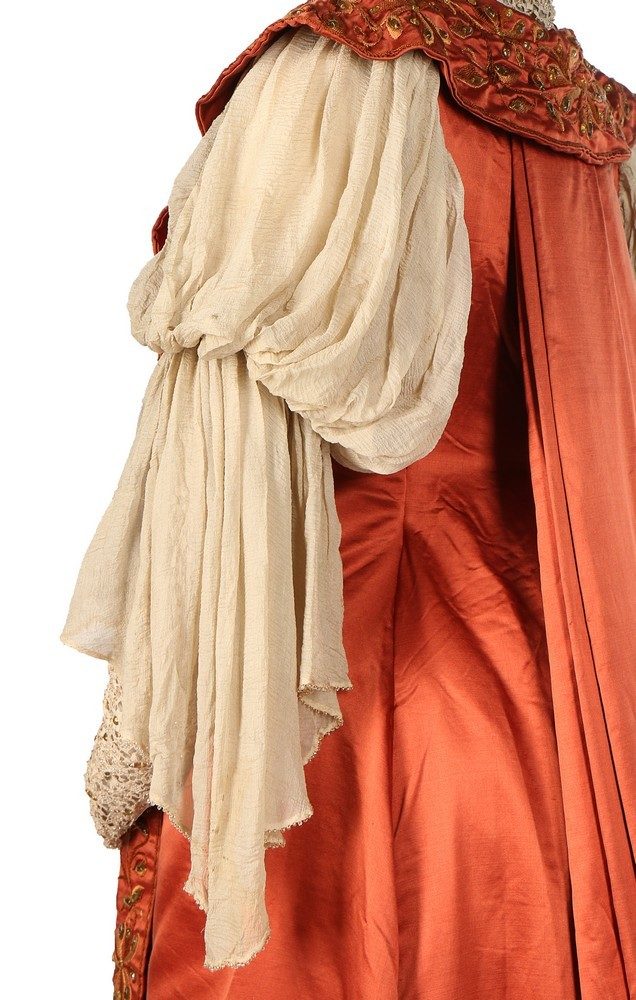I swear I wasn’t thinking about a continuous theme at all when I browsed for this week’s Rate the Dress! But what do you know…it’s once again a back vs front dress, this time with a very ornamented front, and quite plain back.
Last Week: an 1890s Liberty Tea Gown
Although tea gowns weren’t primarily meant for tea parties, the ratings for last week’s Liberty example were rather like black tea with milk: very popular with most (at least that’s how tea goes amongst most of the people I know), and vehemently opposed by a small group (you know who you are, oh thee of ‘tea should NEVER be taken with anything but lemon’!).
Those who didn’t care for the tea gown were either not a fan of the droopy sleeves, or not a fan of orange.
The Total: 8.5 out of 10
Not quite as good as last week, but eminently respectable.
It was quite a fun score to add up, because I put the votes in columns of 10, and add up each column, and then add the columns and divide by the number of submissions. Every week I try to guess the exact final total as I add, and this week I got it spot on just by glancing at the numbers.
This week: a mid 1920s evening gown by Callot Soeurs
The Goldstein Museum of Design describes this 1925 Callot Soeurs dress as a classic example of 1920s Egyptomania sparked by the 1921 discovery of King Tut’s tomb. However, I personally don’t see anything specifically Egyptian inspired about it.

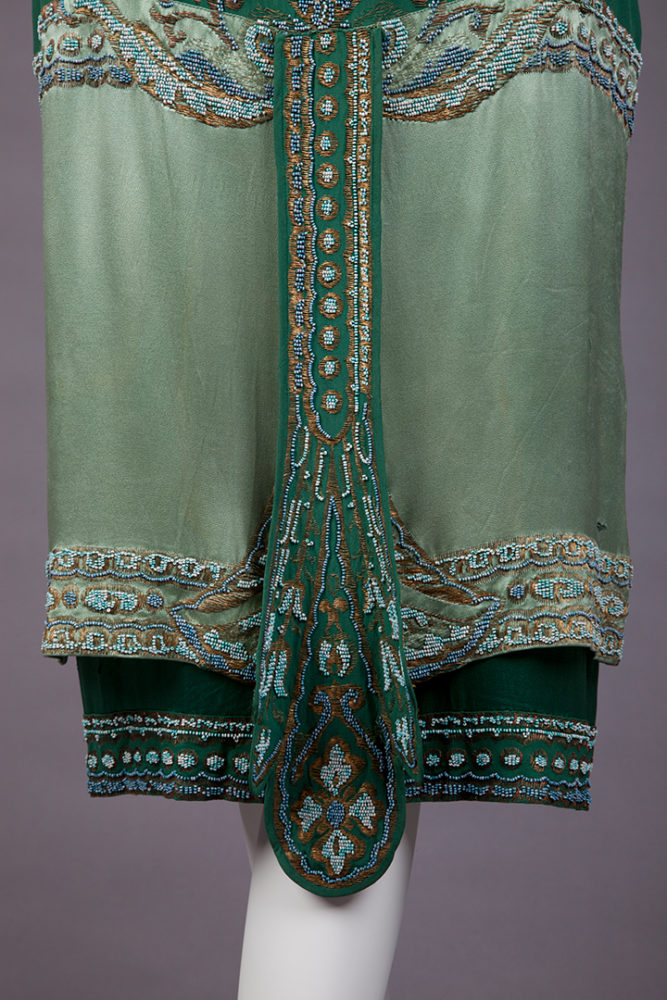
Other than a slight resemblance between the dangling central ornamentation of the dress, and the elaborate belts or central border of men’s shendyt, none of the design elements seem to owe their inspiration to Tut’s tomb or other Ancient Egyptian art or artefacts. Instead they are typical of the types of generic orientalism that were popular in dress design throughout the 1910s and 20s – well before Carter’s discovery.
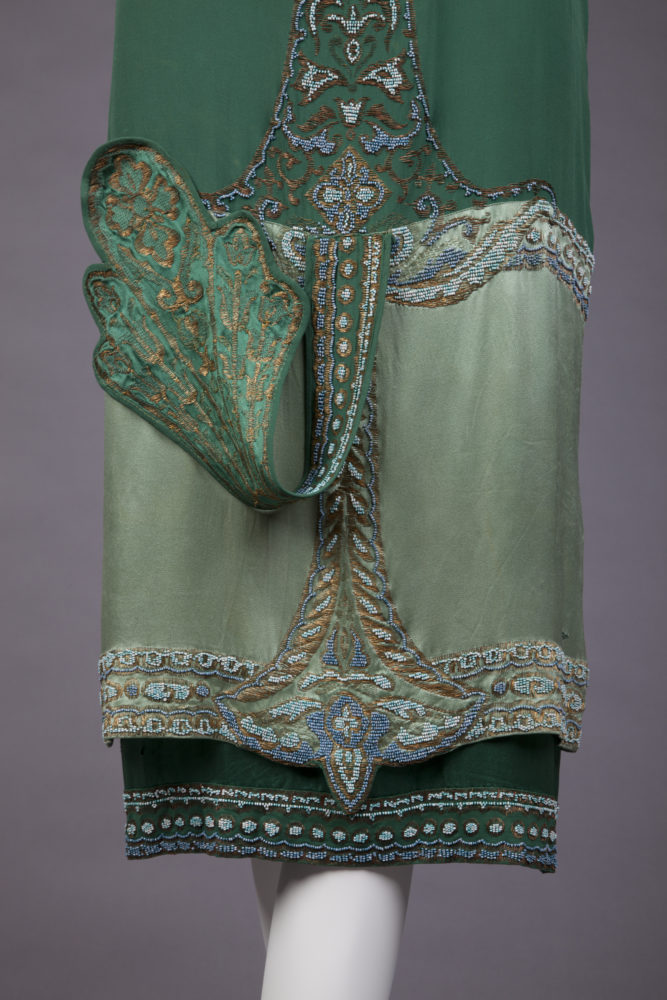
The design could just as easily be inspired by a peacock feather. Or, with its formal central rose or cross, delicate trellis work, and acanthus leaves, the dress could be inspired by illuminated manuscripts and the dangling belt of a medieval gown.
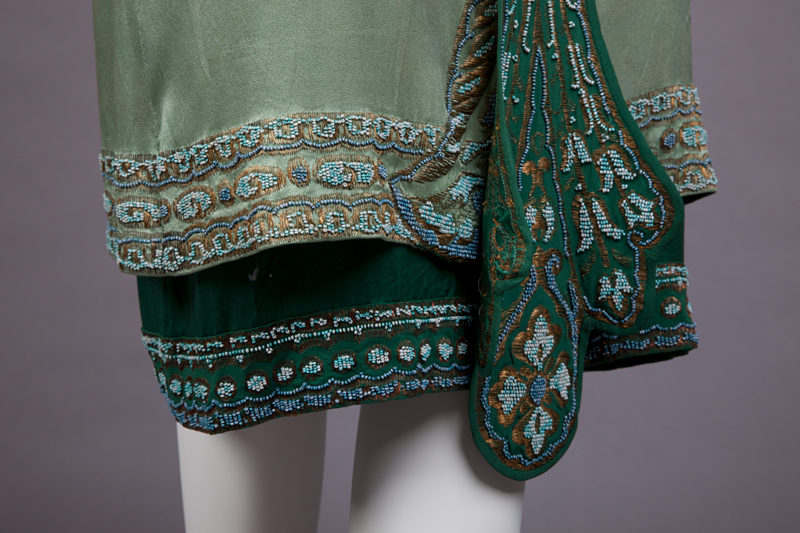
Or perhaps the basis for this dress came from the far east. The border of beading around the neck, and running down the front of the dress, do seem to evoke elements of late 19th century Chinese dress. The blue and white of the patterning, combined with the jade green hues of the dress, could have been taken from different varieties of pottery. Chinese textiles and pottery were both imported into the West in large quantities, and the textiles in particular were popular sources of inspiration for designers.
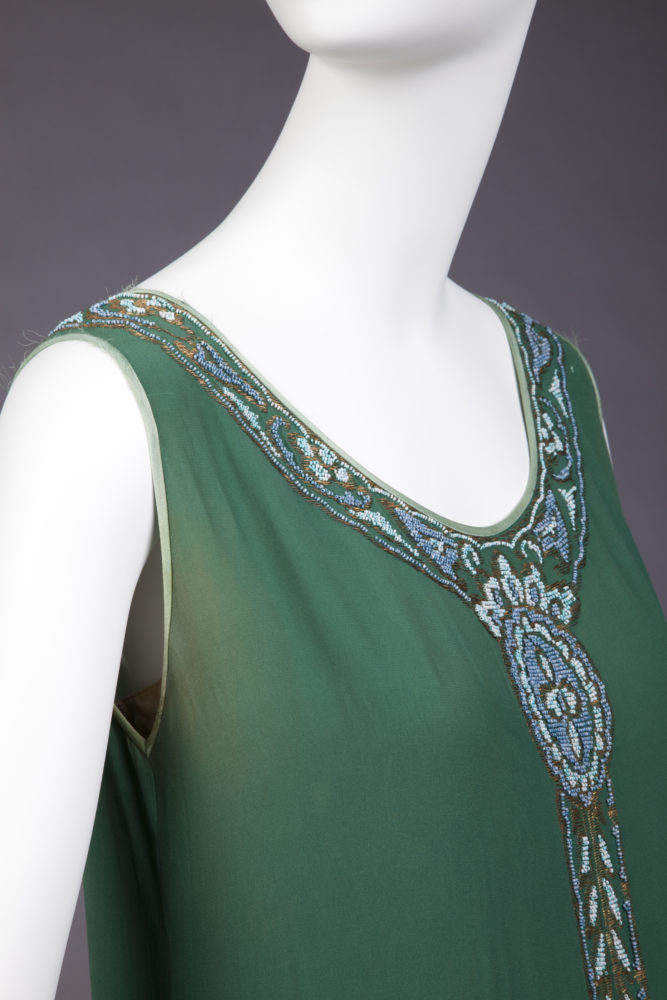
It’s actually typical of the the work of Callot Soeurs that the inspiration for the dress is not as literal as to indicate one easily identifiable source. The design house’s brilliance was in delicately combining and re-imagining many pieces of inspiration into garments that were evocative, without being obviously derivative.
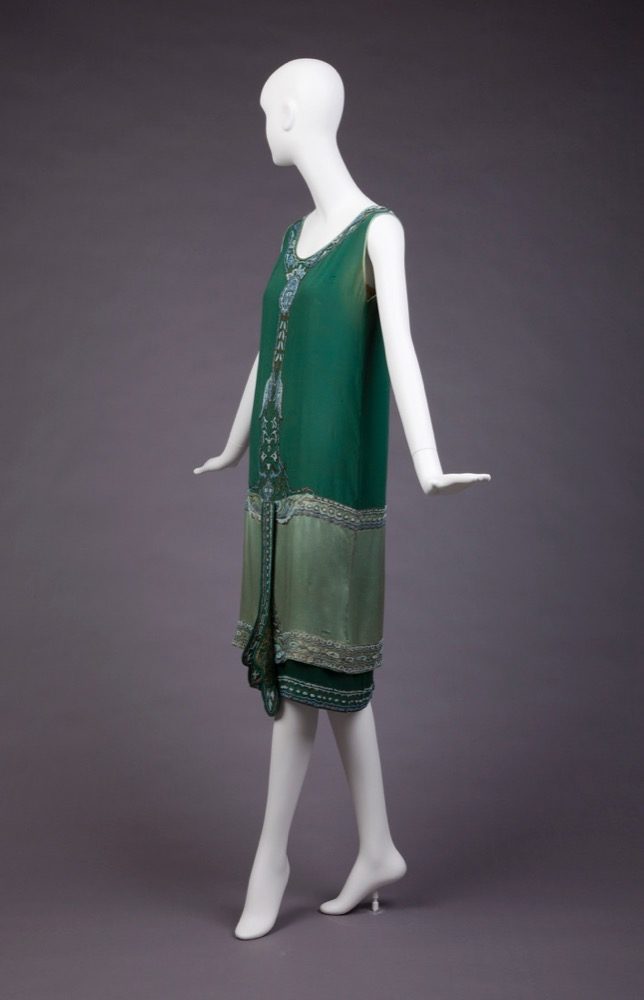
While the inspiration for the dress is unclear, the actual construction is quite simple, but interesting. Like many 1920s dresses (including, quite fittingly, the 1920s tea gown in my collection given to me by the wonderful Karen), the dress is made in two parts. It includes an underdress/slip, with a plain top, and a skirt that forms the dark green under-layer, and a second overlayer of the lighter green.

This method of construction provides a built-in slip and the opportunity for a layered tunic effect without the need for a joining seam. It allows the overdress to float about the wearer, without the weight and bulk of the underskirt dragging it down.
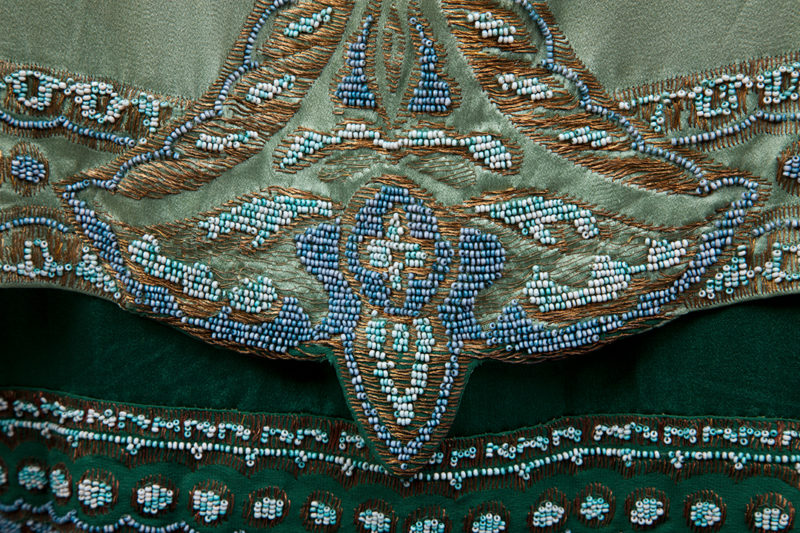
So, what do you make of this dress, with its simple silhouette, but clever construction, and ornamentation of un-specific origin?
Rate the Dress on a Scale of 1 to 10
A reminder about rating — feel free to be critical if you don’t like a thing, but make sure that your comments aren’t actually insulting to those who do like a garment. Phrase criticism as your opinion, rather than a flat fact. Our different tastes are what make Rate the Dress so interesting. It’s no fun when a comment implies that anyone who doesn’t agree with it, or who would wear a garment, is totally lacking in taste.
(as usual, nothing more complicated than a .5. I also hugely appreciate it if you only do one rating, and set it on a line at the very end of your comment, so I can find it! And 0 is not on a scale of 1 to 10. Thanks in advance!)



